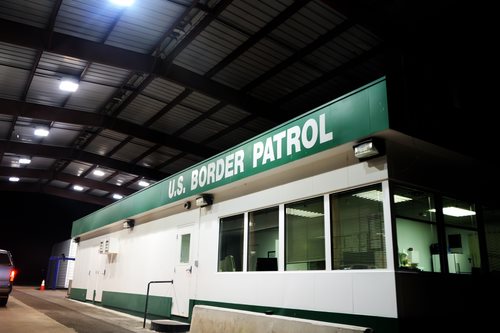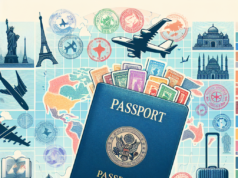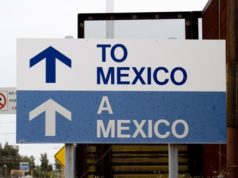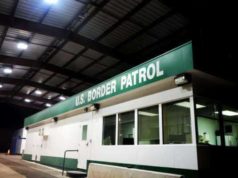
Protecting Our Borders with Border Patrol
Border protection is a crucial component of national security. The United States of America is the fourth-largest country in the world, with a land area of over 3.7 million square miles. Its sheer size and varied terrain make it challenging to keep its borders secure. However, with the help of Border Patrol, the country has made significant strides in maintaining its border integrity.
What is Border Patrol?
Border Patrol is a law enforcement agency under the U.S. Customs and Border Protection (CBP). Its primary responsibility is to secure the country’s borders, enforce immigration laws, and prevent illegal entry into the country. Border Patrol agents are responsible for patrolling the land, air, and sea borders of the United States.
History of Border Patrol
Border Patrol can trace its roots back to 1904, when Congress authorized the appointment of mounted guards to patrol the border between the United States and Mexico. The agency has evolved over time, and its responsibilities have expanded to include not only border security but also drug interdiction, illegal alien apprehension, and other law enforcement tasks.
Since the agency’s inception, Border Patrol has faced numerous challenges and controversies, including allegations of excessive use of force, profiling, and systemic racism. However, the agency has also seen monumental growth and improvements in its operations.
Border Patrol’s Responsibilities
Border Patrol has several critical responsibilities centered on the protection of the United States of America and its citizens.
Prevention of Illegal Entry
Border Patrol’s primary responsibility is the prevention of illegal entry into the United States. This task includes monitoring land, air, and sea borders to ensure that no person crosses into the country illegally. According to the CBP, Border Patrol agents made 367,000 apprehensions in 2020 (CBP, 2021).
Drug Interdiction
Border Patrol works with other law enforcement agencies to interdict the flow of illegal drugs into the United States. The Agency is responsible for seizing illicit drugs at the border, including cocaine, marijuana, and methamphetamine, among others.
Enforcing Immigration Laws
Border Patrol is responsible for enforcing immigration laws in the United States. The Agency works closely with U.S. Citizenship and Immigration Services (USCIS) to ensure compliance with immigration laws and regulations.
Humanitarian Efforts
Border Patrol is also responsible for facilitating humanitarian efforts, including rescuing migrants in distress. The Agency has a specialized unit, the Border Patrol Search, Trauma, and Rescue (BORSTAR), which is responsible for rescue operations.
Border Patrol’s Technology
Border Patrol leverages technology to enhance its capabilities in securing the United States border. The Agency provides its agents with advanced tools and resources to enable them to carry out their duties effectively. Some of the technology used by Border Patrol includes:
Drones
Border Patrol deploys unmanned aerial vehicles (UAVs) to monitor remote locations along the border. Drones can cover significant distances in a short time, allowing agents to detect and respond to illegal activities quickly.
Surveillance Cameras
The Agency uses surveillance cameras to monitor activity at the border. These cameras are equipped with advanced technology such as thermal vision capabilities, making it easier for agents to detect and respond to illegal activity.
Ground Sensors
Border Patrol employs ground sensors to monitor movement along the border. These sensors can detect movements of animals or humans and can provide real-time alerts to agents in the field.
Mobile Surveillance
Border Patrol uses mobile surveillance units to monitor the border. These units are equipped with state-of-the-art technology and can be deployed at any location along the border.
Border Wall
In 2019, the Donald Trump administration proposed a border wall that would run from the Gulf of Mexico to the Pacific Ocean. The wall, according to President Trump, was to protect the United States from drugs, crime, and illegal immigration. The project was met with opposition, with critics citing its high cost, environmental impact and questions about its effectiveness.
In January 2021, the Biden administration halted the construction of the border wall and directed the review of all funds allocated or diverted for the wall’s construction (CBP, 2021).
Border Patrol’s Impact
Border Patrol has contributed significantly to the protection of the United States of America and its citizens from external threats. According to the CBP (2021), the Agency prevented over 3,400 pounds of narcotics from entering the United States in 2020.
Border Patrol also plays a significant role in preventing illegal immigration. The Agency apprehends illegal aliens who try to cross into the United States, thereby limiting the number of unauthorized immigrants in the country.
Challenges
Despite the achievements of Border Patrol, several challenges continue to hinder its operations. Some of these challenges include:
Personnel Shortage
Border Patrol is grappling with a personnel shortage, which is hampering its ability to secure the borders adequately. The Agency has a backlog of thousands of unfilled positions, leading to extended working hours for agents.
Technological Infrastructure
The Agency’s technological infrastructure needs improvement to handle the increasing amount of data collected by Border Patrol. The system in use, called the Electronic Immigration System (ELIS), is outdated and requires upgrading to handle the increased workload.
Politics
Border Patrol has also been a topic of political debate, with different political leaders proposing various policies and reforms. The Agency has been accused of carrying out illegal activities like racial profiling and excessive use of force, leading to widespread criticism of its operations.
Conclusion
Border Patrol plays a vital role in securing the borders of the United States of America. The Agency has made significant strides in preventing illegal immigration and drug trafficking into the country and has saved countless lives through its humanitarian efforts. Challenges facing the Agency include personnel shortages and infrastructure improvements, which must be addressed for Border Patrol to continue performing its critical role effectively.
U.S. immigration laws context for U.S. Border Patrol
The United States Border Patrol is a law enforcement agency with responsibility for controlling the entry of individuals to the U.S. and specifically toward preventing the occurrence of illegal immigration as much as is possible. The U.S. Border Patrol can accordingly be responsible for removing individuals whom it detects attempting to move into the U.S. over the country’s borders.
As such, the U.S. Border Patrol exercises oversight over the nation’s long and largely unsettled borders with the two neighbors physically contiguous with the nation’s main landmass, as comprise Canada and Mexico. Administrative issues have ensured that the specific policy and workload shouldered by the U.S. Border Patrol with regard to those two nations differs to some extent:
U.S. Border Patrol functions in regard to Mexico:
Current social conditions and the past history of the often fraught relationship between the two countries have conspired to ensure that the main emphasis of the U.S. Border Patrol as a federal agency has often been both perceived and experienced as being toward enforcement against the occurrence of illegal immigration from the direction of Mexico.
For one, the high rates of poverty as have commonly been experienced by the population of Mexico, along with the more recently increased rate of violence to which the nation’s populace is similarly subject, have combined with the U.S.’s relatively high level of affluence and employment to provide an incentive for border crossings to occur northward, regardless of whether immigration and work visas have actually been granted
by the U.S. government.
Another factor in the difficulty faced by the U.S. Border Patrol consists of the past history of the two countries, as is most dramatically marked by the U.S.’s forcible seizure of a large portion of territory formerly under the control of Mexican authorities in the 19th century.
As a result, links persisted between the Spanish-speaking populations on both sides of the border as additionally acted to encourage greater rates of border crossings than would otherwise be allowed for by the empowered U.S. authorities. As such, the effectiveness of the U.S. Border Patrol in this area has often been questioned.
U.S. Border Patrol functions in regard to Canada
The relatively high affluence of Canada, as comparable to the U.S. and placed far above the levels in quality of life generally attained by the populace of Mexico, has typically ensured a much-reduced numbers of officers assigned by the U.S. Border Patrol in comparison with the similar functions exercised in regard to the U.S.-Mexico border.
Administrative history of the U.S Border Patrol
Along with long-standing practical issues, the U.S. Border Patrol has more recently been affected by the increased concern over national security issues raised by the terrorist attacks committed on U.S. soil on September 11, 2001, and by the associated rise in violent Islamic fundamentalism around the globe. As such, the U.S. Border Patrol was shifted from the oversight of the Immigration and Naturalization Service (INS) to the Department of Homeland Security.




















